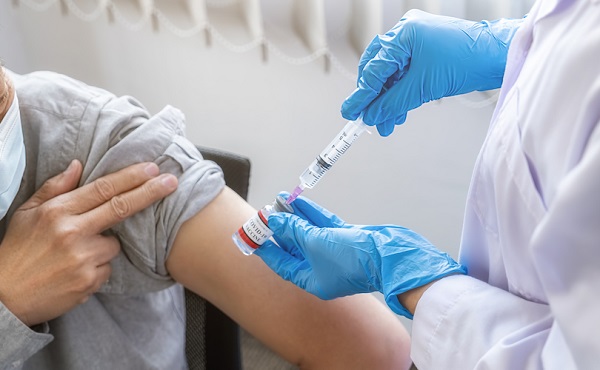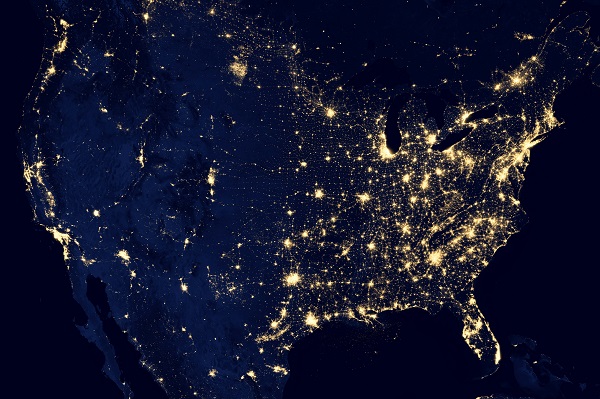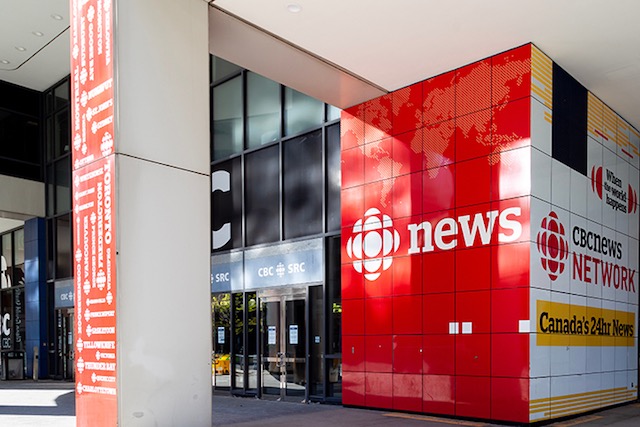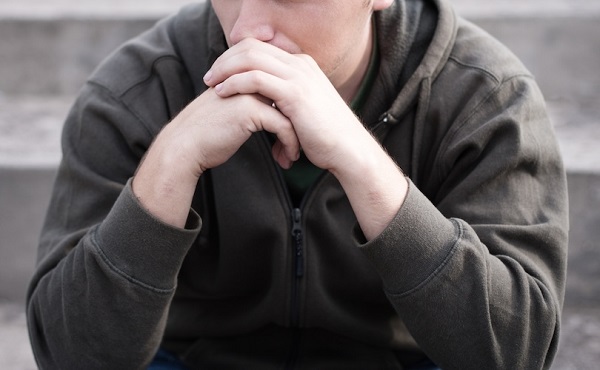COVID-19
Neil Macdonald asks the most important COVID-19 question of all

This is posted with permission from the author, Neil MacDonald. It is originally posted at neilmacdonald.me
So. Who gets the ventilators?
I wish Sophie Gregoire Trudeau good health, and a complete recovery in her quarantine. The same for the lovely Margaret Trudeau, if she comes down with COVID-19. Both women were at the same speaking engagement in London; presumably, that is where Madame Gregoire Trudeau contracted the virus.
If, heaven forfend, either woman develops the sort of severe respiratory difficulties that have killed other COVID-19 patients, I hope they will both have access to peerless medical care, and a ventilator. Actually, I am certain they will.
One is the prime minister’s wife, the other his mother. Privilege has its privileges.
At the same time – and here comes the kicker – I am not at all certain that, if I or any of my aged relatives come down with the disease in the uncertain and increasingly terrifying weeks to come, there will be ventilators for us. And as one American epidemiologist put it recently, the alternative to ventilation for someone with extreme respiratory symptoms is death. As a despairing Italian physician put it on social media from the horrors of his triage centre in Bergamo: “Every ventilator becomes like gold.”
Here is the math: Health Minister Patty Hajdu says between 30 and 70 per cent of Canadians will likely be infected. The mortality rate of COVID-19 is between two and three per cent. Assuming the optimistic end of Hajdu’s estimate, and the optimistic end of the mortality rate, we are still talking about 225,000 people dying, and, as the despairing Italian physician says, the diagnosis is always the same: Bilateral interstitial pneumonia. Meaning those patients’ lungs are so badly compromised the only thing that has a chance of saving them is a ventilator, or mechanical breathing apparatus. It alone can infuse the lungs with enough oxygen to maintain life.
Now: We are told Canada has about 5,000 ventilators. That’s one ventilator for every 45 of those dying patients. Unless Canada somehow acquires a lot more of the machines, and the entire world is now chasing them, there will be rationing. That is what has been happening in Italy. Doctors there have been given the ghastly job of deciding who receives ventilation, and who is sent home to meet their fate.
Now, let’s add something else to the equation: In Canada, the law prevents citizens from paying for core medical care, which a ventilator surely is. In principle, ventilators will be rationed, well, rationally.
But that’s not how the system really works.
In Canada, influence and power get you to the front of the line. Does anyone really believe that cabinet ministers or premiers or captains of industry or very senior government officials sit in waiting rooms, or have a hard time finding a family doctor? Or that those of us with professional or family connections aren’t treated as privileged entities?
So the big question – the crucial, life-or-death question as this virus tears through the population – will very quickly be this: who gets the ventilators?
No doubt, an attempt will be made to lay down a set of objective criteria. They probably already exist. It makes sense to ventilate patients who stand the best chance of surviving. A physician friend in Italy unilaterally decided to send very old people home, along with anyone whose health was already severely compromised by previous morbidities.
But imagine the pressure on a Canadian doctor, or hospital dependent on government funding, when the aged relative of a very powerful politician needs ventilation. Or a very rich person who has donated generously to the hospital. Or the mother or father of a person whose role in the economy is considered so crucial that he or she must not be distracted by familial worries.
Jane Philpott, Justin Trudeau’s first health minister, once declared that not being able to buy your way to the front of the line is a “core Canadian value.” The remark was rather gormless, I thought at the time, given the reality of the system. Doctor friends of mine thought it was hysterical.
But the big test is coming. The public deserves to know precisely how lifesaving care will be allocated. The public has a right to transparent fairness.
My guess: fairness and objective allocation of resources will slam into the wall of privilege. We shall see. We shall also see how intrepid the media is on this subject. So far, it hasn’t been.
From neilmacdonald.me

Neil Macdonald spent 43 years reporting on politics, wars, elections, revolutions, booms, crashes, coups, and the struggles of ordinary human beings in the unforgiving, bewildering rush of history.
He worked as an editor and reporter in three newspapers before moving to CBC News, for which he covered Quebec before moving to Parliament Hill, then abroad as a foreign correspondent in the Middle East and Washington, DC., and finally as the CBC’s opinion columnist.
He has stood in Iraq watching missiles strike, in Bethlehem watching people welcome the new millennium, in Jerusalem watching an intifada erupt, and in Chicago watching Barack Obama accept the American presidency. He followed the Pope through the Holy Land, tracked down Hitler’s last general in Europe, covered the triumphant arrival and subsequent humiliation of Jean-Bertrand Aristide in Haiti, revealed the plotters who killed Rafiq Hariri in Beirut, and documented the financial horrors unleashed on America’s cities by Wall Street.
He speaks French, having grown up in Quebec, reasonably good English, and sufficient Arabic. He lives in Ottawa.
Learning at home? Here’s a list of links to take you on a “Virtual Field Trip”
COVID-19
FDA requires new warning on mRNA COVID shots due to heart damage in young men

From LifeSiteNews
Pfizer and Moderna’s mRNA COVID shots must now include warnings that they cause ‘extremely high risk’ of heart inflammation and irreversible damage in males up to age 24.
The Trump administration’s Food and Drug Administration (FDA) announced it will now require updated safety warnings on mRNA COVID-19 shots to include the “extremely high risk” of myocarditis/pericarditis and the likelihood of long-term, irreversible heart damage for teen boys and young men up to age 24.
The required safety updates apply to Comirnaty, the mRNA COVID shot manufactured by Pfizer Inc., and Spikevax, the mRNA COVID shot manufactured ModernaTX, Inc.
According to a press release, the FDA now requires each of those manufacturers to update the warning about the risks of myocarditis and pericarditis to include information about:
- the estimated unadjusted incidence of myocarditis and/or pericarditis following administration of the 2023-2024 Formula of mRNA COVID-19 shots and
- the results of a study that collected information on cardiac magnetic resonance imaging (cardiac MRI) in people who developed myocarditis after receiving an mRNA COVID-19 injection.
The FDA has also required the manufacturers to describe the new safety information in the adverse reactions section of the prescribing information and in the information for recipients and caregivers.
Additionally, the fact sheets for healthcare providers and for recipients and caregivers for Moderna COVID-19 shot and Pfizer-BioNTech COVID-19 shot, which are authorized for emergency use in individuals 6 months through 11 years of age, have also been updated to include the new safety information in alignment with the Comirnaty and Spikevax prescribing information and information for recipients and caregivers.
In a video published on social media, Dr. Vinay Prasad, director of the Center for Biologics Evaluation & Research Chief Medical and Scientific Officer, explained the alarming reasons for the warning updates.
While heart problems arose in approximately 8 out of 1 million persons ages 6 months to 64 years following reception of the cited shots, that number more than triples to 27 per million for males ages 12 to 24.
Prasad noted that multiple studies have arrived at similar findings.
Bruce Dowbiggin
The Covid 19 Disaster: When Do We Get The Apologies?

Breaking: Drs. Bonnie Henry and Theresa Tam have been appointed to the Order of Canada in recognition of their role in the country’s response to the COVID-19 pandemic.
And so the game of covid liar’s poker has more winners. It’s like awarding the captain of the Titanic the Nobel Prize for his work on floatation. As we now know these two— and the other WHO finger puppets in Canada— made the Covid 19 episode worse, not better, with their prescription for panic, positives and punishment. Even as they knew the truth about the limits of the virus and the efficacy of vaccines they continued to spew fallacious PCR data on the extent of the sickness and who was at risk.
Put simply, to protect vulnerable seniors they said kids were also at great risk. Which was unconscionable.
In this they encouraged Justin Trudeau in his worst instincts, combining his father’s insouciant disregard for civil rights (sending in the police) with his mother’s mental stability. Propped up by Team Tam and its U.S. allies such as Anthony Fauci, this hysteria peaked with a sequestered PM crushing the Truckers Convoy’s vaccine protest with emergency measures and destruction of civil liberties.
Lest you wonder, this overreach was recognized at the time. Justice Maclean wrote at the trial of Convoy organizers, “Defendants & other persons remain at liberty to engage in a peaceful, lawful & safe protest”. On Feb. 16, he continued a no-honking order, again writing: “Defendants & other persons remain at liberty to engage in a peaceful, lawful & safe protest.”
The leaders of the Convoy, lynched by Canadian media’s phoney claims of right-wing American interference, are still fighting jail time on charges of nuisance. While violent criminals are routinely released on bail or absolved.
Justice Richard Mosley later concluded that while the convoy was a disruption of public order, it didn’t constitute a national emergency and invoking the act “does not bear the hallmarks of reasonableness — justification, transparency and intelligibility.” But in real time Team Tam made no attempts to correct the wilder misgivings about Covid (lockdowns, mandatory vaccines). Trudeau was given a hall pass. Needless to say the purchased media made things infinitely worse regurgitating these mistakes.
In short, they knew better but hid the truth. But why pick on Henry and Tam? Under Trudeau and his wingman Jagmeet Singh this was the golden age of lies and prevarications in Canada and the U.S. No apologies were ever offered when the truth emerged.
As we’ve noted before, Trudeau cried with a teddy bear carefully positioned over 751 alleged unmarked graves in a known Catholic cemetery that the local Cowessess band abandoned. The Liberal government knew the claim of 215 “children’s graves” was false, and still ran with it to get Trudeau his photo-op. Naturally the CBC Media Party played (and still plays) accomplice in this farce as the Canadian flag was lowered to half-mast for six months and Trudeau ratted out Canada at the UN as a genocidal state.
There were more, plenty more Trudeau scandals that media endorsed and then stood by even as the truth was revealed. SNC Lavalin. We Charity. Arrive Can app. Firing indigenous justice minister. Chinese drug infiltration/ money laundering. Nazi Celebrated in Parliament. Welcome To Canada immigration. Nova Scotia massacre. McKinsey Consultation. Blackface. And so on.
And were there apologies when it came time to make the Trudeau Liberals accountable? No, they staged a media circus over Donald Trump’s assertion of 51st state. All the fake news and deliberate lies went poof, allowing Mark Carney to seamlessly assume the PM job.

Lest We Forget Pt. 2 it was not exclusive to Canada. As we are now learning: Barack Obama and Joe Biden sat in an August 3, 2016 Situation Room briefing and said, yeah, let the highest officials in our administration fabricate evidence to frame the opposing party candidate Donald Trump. Obama. Biden. Comey. McCabe. Strzok. Page. Rice. Etc.
Knowingly using the faked Clinton campaign ‘Steele Dossier’ hoax, they launched a federal investigation into the Trump presidential campaign that lasted three years after Trump was sworn in as the nation’s 45th President. Arresting and jailing his partners and colleagues. Inventing fake stories for their media enablers. Let’s repeat that. Saint Obama knew there was criminal activity in the process but let his henchmen try to fix an election.

And when the ruse was uncovered no one apologized. No one in authority was fired or jailed. The Pulitzer Prizes awarded to the NT Times and Washington Post for disseminating the DEMs scandal were not rescinded. Nor were they given back by the lying newspapers.
The concerted frauds of the same U.S. DOJ, FBI and State Departments were fed by media and accepted by gullible publics in Canada and America. The fantastical 2020 election results were likewise drummed into the public irrespective of the sudden “appearance” of 27 million new votes during a pandemic.
It was all a fitting preamble to the 2020-2024 Biden senility scandal with Democrats running a man they knew was in full dementia. In the 2020 election Biden was hidden from public view, the better to let media attack Trump for spurious charges launched by partisan DNC attorneys in Georgia, New York and DC. Even then it took the suppression of Hunter Biden’s incriminating laptop just prior to the election to get his father elected.

The dance of denial continued in Biden’s term as he physically and mentally deteriorated before the American public. But inquiries about who was running the government if not Biden were harshly suppressed. Media lackeys noted he was sharp as a tack mentally and in tip-top physical condition when he wasn’t falling down stairs.
It took the stunning 2024 debate debacle with Trump to strip away the lies about Biden’s health, now said to be advanced prostate cancer and Parkinson’s. The media, caught in their own lies about Biden’s condition, offered no apologies and tried to blame Biden’s stutter for the performance.. Right.
These were the two greatest U.S. hoaxes from people who’d cried hoax incessantly. They were hardly the only abuse of public trust. Some of the perpetrators are said to now be under investigation— even as they hand out awards to each other. The media’s credibility is shattered and yet they still blame others. Jaded voters are taking a “we’ll see” approach. But expectations of any change in DC or Ottawa are limited.
As Stephen Taylor posted on X: “Turns out for Liberals, ‘elbows up’ just means ‘noses up’ like it always has.”
Bruce Dowbiggin @dowbboy is the editor of Not The Public Broadcaster A two-time winner of the Gemini Award as Canada’s top television sports broadcaster, his new book Deal With It: The Trades That Stunned The NHL And Changed hockey is now available on Amazon. Inexact Science: The Six Most Compelling Draft Years In NHL History, his previous book with his son Evan, was voted the seventh-best professional hockey book of all time by bookauthority.org . His 2004 book Money Players was voted sixth best on the same list, and is available via brucedowbigginbooks.ca.
-

 COVID-1921 hours ago
COVID-1921 hours agoFDA requires new warning on mRNA COVID shots due to heart damage in young men
-

 Business19 hours ago
Business19 hours agoCarney’s new agenda faces old Canadian problems
-

 Indigenous20 hours ago
Indigenous20 hours agoInternal emails show Canadian gov’t doubted ‘mass graves’ narrative but went along with it
-

 Daily Caller16 hours ago
Daily Caller16 hours agoBlackouts Coming If America Continues With Biden-Era Green Frenzy, Trump Admin Warns
-

 Bruce Dowbiggin22 hours ago
Bruce Dowbiggin22 hours agoEau Canada! Join Us In An Inclusive New National Anthem
-

 Business2 days ago
Business2 days agoCBC six-figure salaries soar
-

 Addictions2 days ago
Addictions2 days agoCan addiction be predicted—and prevented?
-

 Addictions2 days ago
Addictions2 days agoMore young men want to restrict pornography: survey


